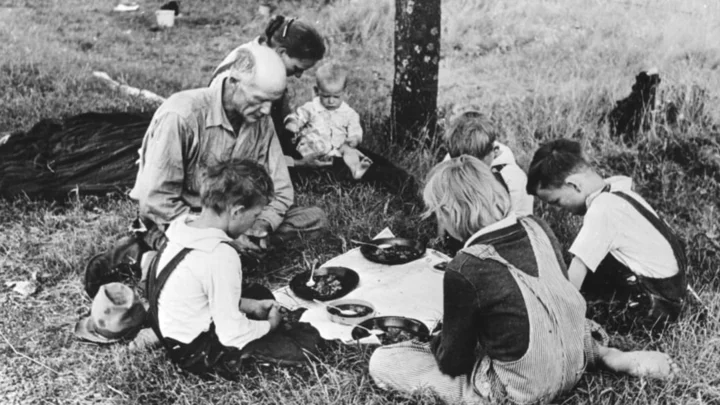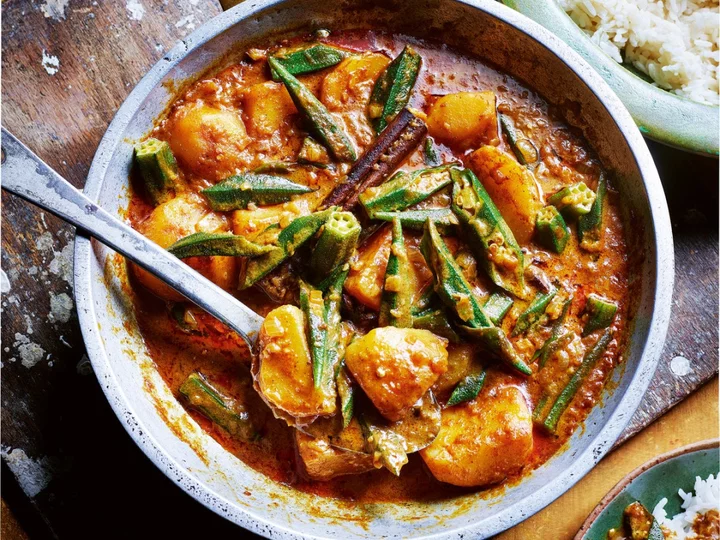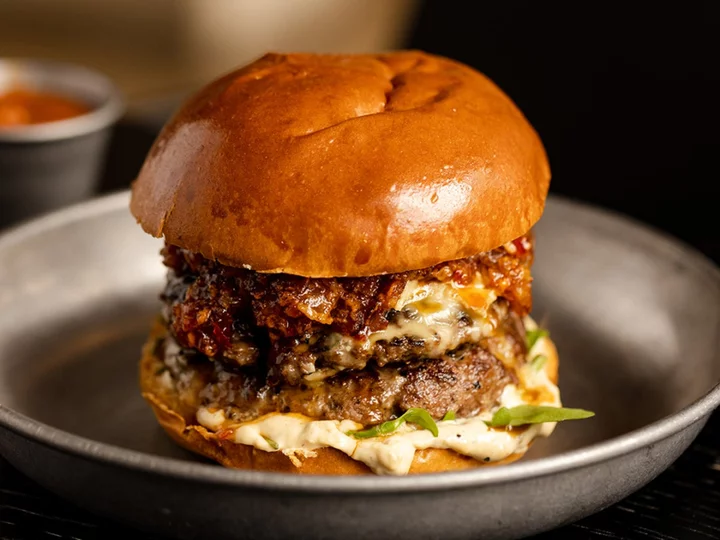According to historians, modern society can learn a lot from the myriad ways people put food on the table during the Great Depression. While some people raised livestock and grew their own fruits and vegetables, others had to stretch every dollar and pinch every penny to get the most food for their buck during hard economic times. Here are 10 recipes that might seem strange today but were regular features at mealtime in the Depression Era. For more recipes from that time, pick up A Square Meal: A Culinary History of the Great Depression.
1. Poor Man’s Meal
During the Great Depression, potatoes and hot dogs were very inexpensive, so many meals included either or both ingredients. In the video above, Clara—who lived through the Depression and passed away in 2013—walked viewers through the process of making the “poor man’s meal”: Peel and cube a potato, then fry it in a pan with oil and chopped onions until they brown and soften. Then add slices of hot dog, cook a few minutes more, and serve.
2. Creamed Chipped Beef
Made with dried and salted beef, creamed chipped beef was an easy and cheap dish that originated in Eastern Pennsylvania Dutch Country, New Jersey, and the Mid-Atlantic. To make it yourself, melt two tablespoons of butter in a pot over medium heat and add two tablespoons of flour to make a roux. Slowly whisk in 1.5 cups of milk until it thickens and boils. Add 8 ounces of dried beef (like Hormel) and serve over toast.
Affectionately called S.O.S. (“sh*t on a shingle” or “save our stomachs”), creamed chipped beef on toast was also a staple of the U.S. military during World War I and especially World War II.
3. Hoover Stew
Hoovervilles—shantytowns that sprang up during the Depression—weren’t the only things named after America’s 31st president, who had the misfortune to be elected just before the Crash. Hoover stew was the name given to the soup from soup kitchens or similarly thin broths. One recipe calls for cooking a 16-ounce box of noodles like macaroni or spaghetti. While that’s on the stove, slice hot dogs into round shapes. Drain the pasta when it’s almost done and return to the pot; drop in the sliced hot dogs. Add two cans of stewed tomatoes and one can of corn or peas (with liquid) to the pot. Bring the mixture to a boil and then simmer until the pasta is finished cooking. No need to use corn or peas; you can substitute those veggies for anything canned and inexpensive.
4. Egg Drop Soup
Here’s Clara’s recipe for egg drop soup: Peel and dice a potato and an onion. Slowly brown them in a pot with oil until soft, then add bay leaves and salt and pepper. Once browned, add half a pot of water to the mix to make broth. Simmer on the stove and add more salt and pepper to taste until the potatoes are cooked. While boiling, crack two eggs into the pot and stir until scrambled. Add two more eggs into the soup so the yolk hardens and add cheese to finish it off. Once completed, serve the egg drop soup over toast.
5. Corned Beef Luncheon Salad
In the 1930s, gelatin was considered a modern, cutting-edge food. Dishes like corned beef luncheon salad—which consisted of canned corned beef, plain gelatin, canned peas, vinegar, lemon juice, and occasionally cabbage—were very popular and inexpensive to make. According to Andy Coe, co-author of A Square Meal, the recipe was just “wrong in every possible way” when compared with today’s modern tastes and palate.
6. Frozen Fruit Salad
Served during the holiday season as a special treat, frozen fruit salad was made with canned fruit cocktail (or your favorite canned fruit), egg yolks, honey, and whipping cream.
7. Spaghetti with Boiled Carrots and White Sauce
One of the dishes Eleanor Roosevelt recommended and promoted with the development of home economics in schools and colleges during the Great Depression was spaghetti with boiled carrots and white sauce. It consists of spaghetti cooked until mushy (about 25 minutes) and mixed with boiled carrots. The white sauce is made from milk, flour, salt, butter or margarine, and a little pepper. After mixing, pour into a tray and bake to make a casserole.
8. Prune Pudding
Although he had a taste for fancy meals, President Franklin Delano Roosevelt was served a humble seven-and-a-half-cent lunch, which included deviled eggs in tomato sauce, mashed potatoes, coffee, and, for dessert, prune pudding. Roosevelt’s White House ate modestly in “an act of culinary solidarity with the people who were suffering,” Jane Ziegelman, co-author of A Square Meal, told The New York Times.
9. Buttermilk Soup
Most For Your Money Cookbook, published in 1938, offers two recipes for buttermilk soup. The first involves adding raisins, some nutmeg, sugar, salt, and a lemon peel to a quart of buttermilk; bring that to a boil, then add rice. Cover and “boil slowly until rice is soft.” The authors note that “Buttermilk should sell for less than half the price of fresh milk ... which makes the above soup one of the cheapest and most nutritious we know, besides being a novel change from the usual run of soups.”
10. Dandelion Salad
Guides like 1937’s Americas Cookbook recommended using dandelion greens in a number of recipes, including salads. In the video above, you can watch Clara whip up a dandelion salad, which she noted was “free and good for you”—in fact, dandelions are a nutrient-rich superfood. She dug her dandelions right out of her backyard by the roots; next, she removed the flowers (although they’re also edible) and dead leaves and washed them rigorously to get rid of all the dirt. Clara dressed the salad with lemon juice, olive oil, and salt.
A version of this story ran in 2016; it has been updated for 2021.
This article was originally published on www.mentalfloss.com as 10 Curious Recipes From the Depression Era.









